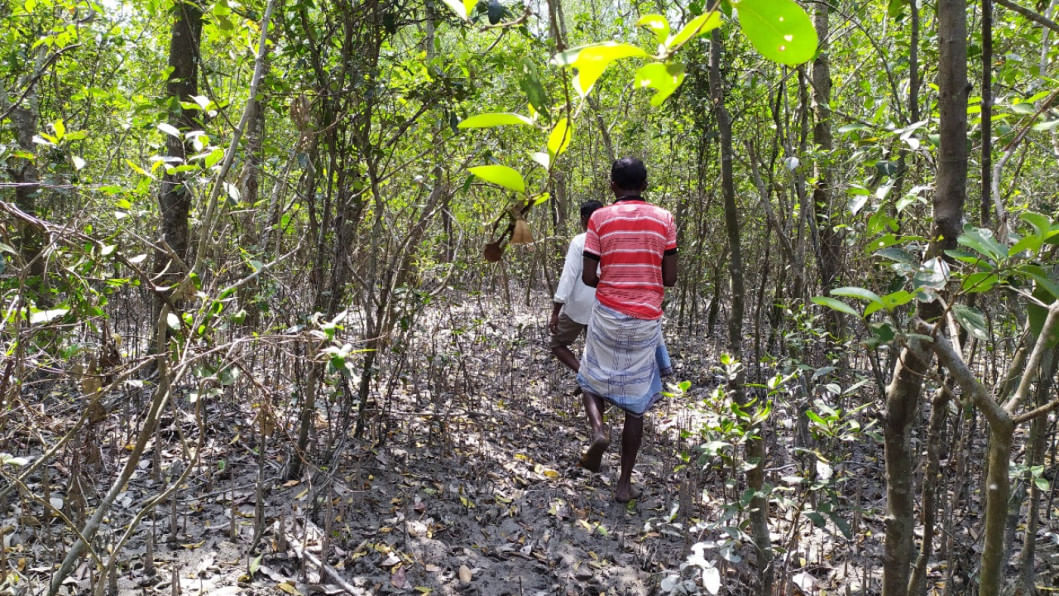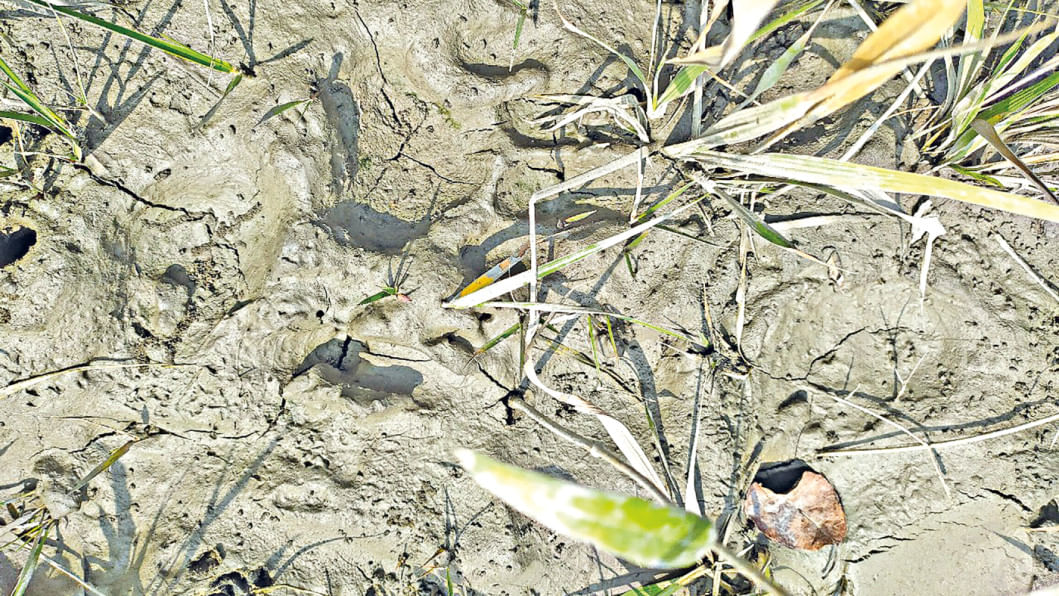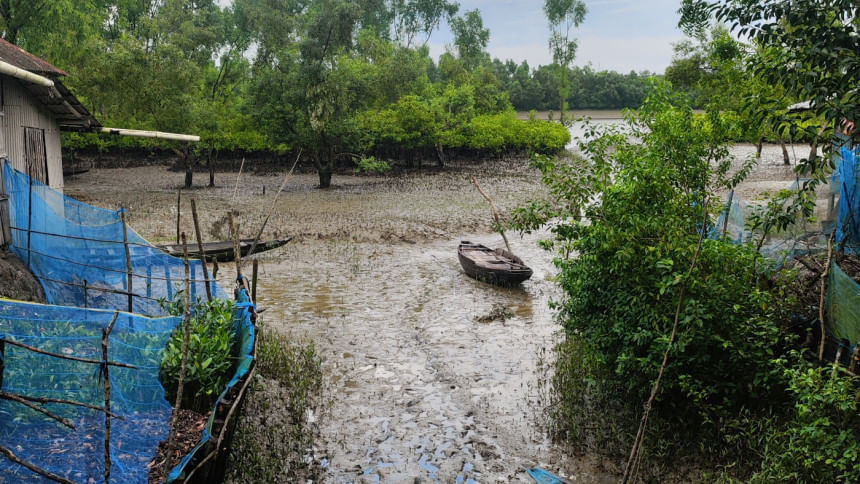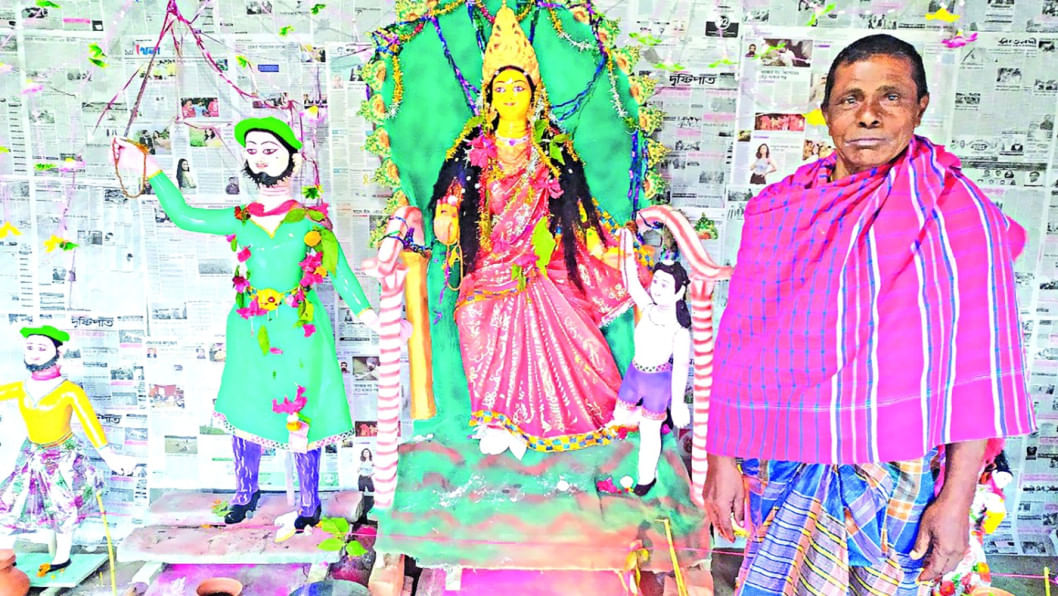In the shifting mudflats and mangrove thickets of the Sundarbans, survival is a constant negotiation. For the Bonojibis— the people who depend on its marshy terrain, venturing out for fish, honey, and firewood —living alongside tigers is not just a matter of danger, but of daily practice. Over generations, they have developed a quiet language of respect, reading the forest for signs and symbols. Among these, the pugmark of a tiger is not merely a footprint: it is a message, a presence, a reminder that the jungle belongs to more than humans. To acknowledge it, even to greet it, is to accept the terms of co-existence in a shared and perilous home.

"Whenever we venture into the forest and work in the forest creeks—whether fishing, collecting crab, or honey—if we find any pugmarks, we offer Salam to it," shared Bishwa Mandal, an elderly Bonojibi from Abad Chandipur, a village adjacent to the south-western range of the Bangladesh Sundarbans. He added, "If you give Salam, then it brings satisfaction to whom you are offering it. The jungle is a sacred place; if we offer Salam to the tiger and to all creatures in the jungle, they feel respected and acknowledged."
The act of offering Salam also symbolically signifies seeking permission to access the tiger's abode. For them, pugmarks are not merely tracks; they are symbols representing the mythical character of Dakhin Ray (king of the south), also known as the adopted son of Bonbibi (mother of the Forest).

Like Bishwa Mandal, the wider Bonojibis community believes that Salam, as a form of greeting between species, creates a space of mutual respect and dignity and acknowledges the existence of different creaturely beings. The form of such greeting rituals functions as a way of communication between humans and non-humans. It precisely conveys a sense of collective relatedness and affinity between prey and predator.
Whenever the Bonojibis enter the jungle and step into the alluvial creeks (mal), at first sight they carefully scan the trunks of large trees. They believe tigers often inscribe scratch marks—known as nolir hasor—on these tree trunks with their front claws. These marks are thought to signify their abode and territory, eventually helping them to navigate when returning from the hunt. The Bonojibis refrain from entering the alluvial creeks and dense forest territory if they find any claw marks inscribed on the trees.

If they find any fresh pugmark (taja bager kor) on the muddy creeks, they immediately leave that place. They usually vacate the forest passage for the tiger and try to find another passage for fishing and collecting honey. Most of the Bonojibis are highly skilled in reading pugmarks. They can often tell how old the tracks are and when the tiger last passed through the area by closely observing the condition and texture of the mud. However, they often face difficulties tracing fresh pugmarks since the forest passages are submerged twice a day due to the tide and ebb cycle of the rivers. The high tides frequently wash away the tracks left on the alluvial forest bed.

For the Bonojibis, pugmarks serve as a repository of numerous signs that in extension unravel the motives and behaviours of tigers. By observing the movement and pattern of these tracks, they can interpret the tiger's intent—whether it is simply walking, searching for prey, lying in ambush, or chasing a target. These marks also help them to guess the tiger's gender and age, distinguishing between a mature tiger and a cub. Additionally, experienced Bonojibis note that the depth of the pugmarks in the alluvial mud can suggest whether the tiger is carrying prey in its mouth.

The matter of reading pugmarks, in other words, functions as a semiotic system related to wildlife, as the Bonojibis meaningfully understand it. That embedded ecological knowledge of semiotics enables both human and tiger to share the forest passages, the food granary of the forest, and cultivate co-existence and mutual survival.
Yet, the risks remain high; a single misreading of pugmarks or a moment of disrespect can lead to fatal consequences. Since 2000, about 300 people have been killed in tiger attacks in the Bangladesh Sundarbans, and in the deltaic villages along the forest's edge you can readily meet survivors whose bodies bear the scars. In this place where river and tide constantly erase and redraw the lines of passage, the pugmark endures as a reminder that co-existence is never without risk, but neither is it without meaning.
Md Raihan Raju is a journalist at The Daily Star. He can be reached at [email protected]


Comments